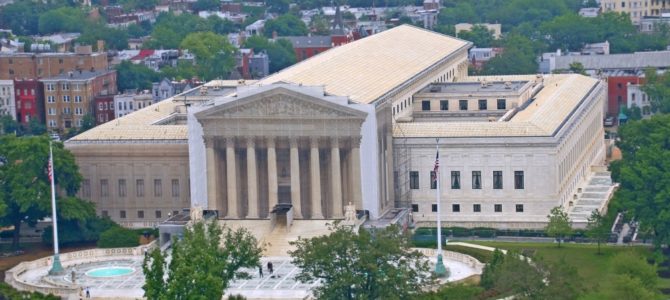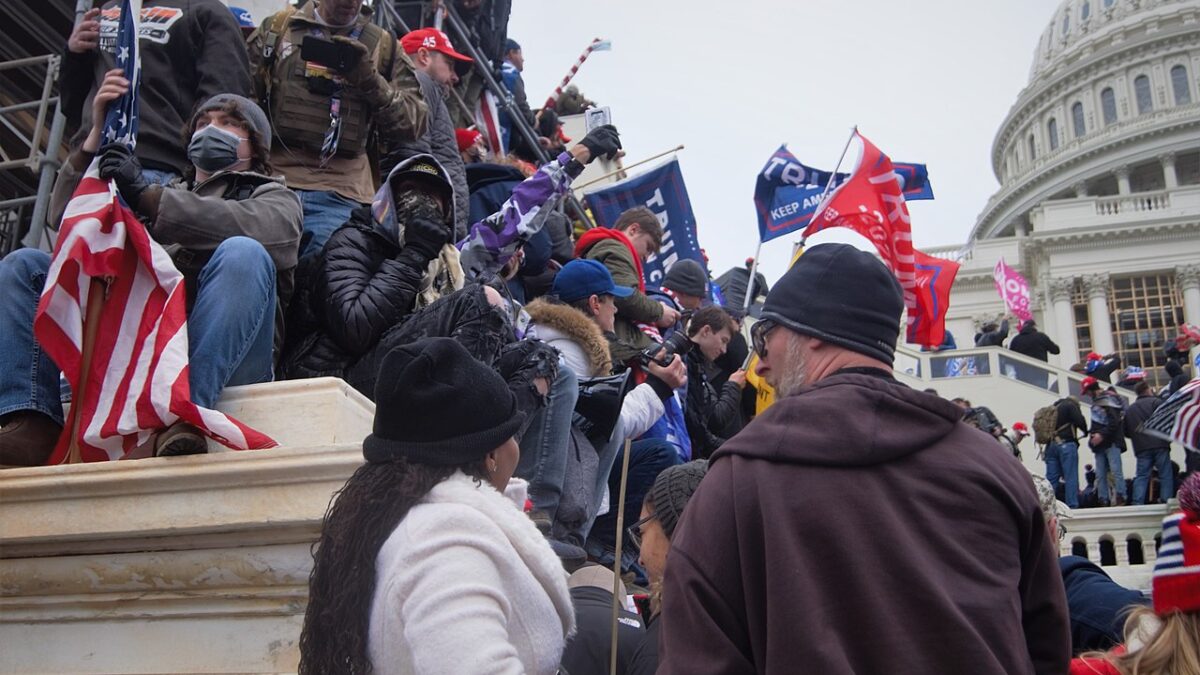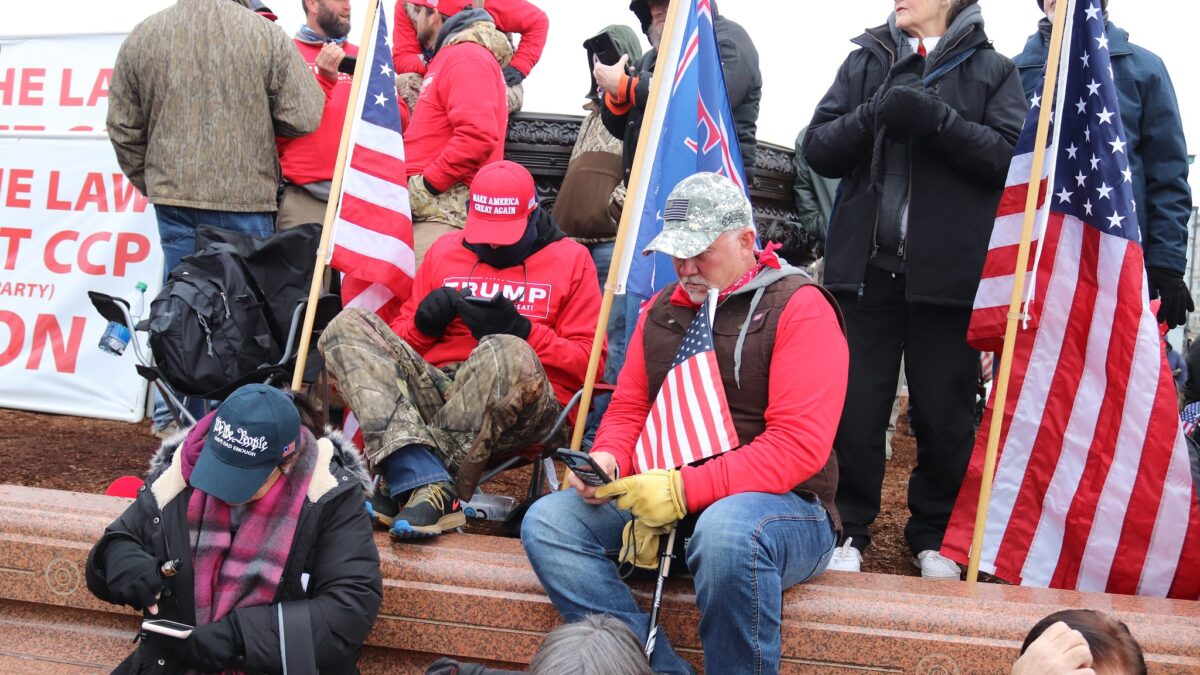
Last week the U.S. Supreme Court heard oral arguments in the first gun rights case to reach the high court in more than a decade. The case, New York State Rifle and Pistol Assoc. v. Bruen, concerns the constitutionality of New York’s law banning the carrying of handguns outside the home for self-defense, absent a license—something the state will only issue if the applicant establishes a unique need for self-defense.
For an overview of the case, read here. A more in-depth analysis of both the case and the current state of Second Amendment jurisprudence is available here. For six take-aways from the argument, read along.
1. New York Concedes The Second Amendment Secures an Individual’s Right to Bear Arms Outside the Home
When the individual New Yorkers challenging the law, Robert Nash and Brandon Koch, along with the New York State Rifle and Pistol Association, first asked the Supreme Court to hear their appeal, they sought to entice the high court to take the case by stressing how important the underlying constitutional principle at issue is, writing: “Perhaps the single most important unresolved Second Amendment question remaining” after Heller and McDonald established the individual right to bear arms, “is whether the Second Amendment secures the individual right to bear arms for self-defense where confrontations often occur: outside the home.”
Not only was that question unanswered by the Supreme Court in Heller and McDonald, but after Heller and McDonald the lower courts disagreed on the scope of the Second Amendment outside of one’s house.
But last Monday’s argument made the issue a non-issue, with New York conceding the question. The “history is so clear that New York no longer contests that carrying a handgun outside of the home for purposes of self-defense is constitutionally protected activity,” Paul Clement, the attorney arguing on behalf of the petitioners challenging the state’s restrictive licensing law, stressed during oral argument.
2. Nice Little Right—I Mean, Privilege—You’ve Got There
While New York conceded the Second Amendment applies beyond one’s threshold, Solicitor General Barbara Underwood quickly forgot that the Bill of Rights protects rights—it doesn’t define privileges. For instance, in discussing the regulation of firearms outside the home, Underwood started to say that “these regulations are all an effort to accommodate the right,” but then backtracked, saying the regulations seek to “respect the right of self-defense.”
The slip of the tongue was telling, however: It means New York state doesn’t truly view the Second Amendment right to keep and bear arms as a right, but as a privilege it will accommodate — when governmental officials deem it appropriate.
Justice Samuel Alito exposed this reality more clearly when he asked New York’s solicitor general whether an employee leaving a New York City building at midnight had a right under the state’s licensing scheme to carry a concealed weapon if she feared walking home through a high-crime area. Underwood acknowledged that under the New York licensing scheme, the cleaning woman would not be entitled to a permit.
“How is that consistent with the core right to self-defense, which is protected by the Second Amendment?” Justice Alito countered.
“Because the core right to self-defense doesn’t . . . allow for all to be armed for all possible confrontations in all places,” New York’s attorney replied.
While true, the response ignores the reality of New York’s position, which Justice Alito spelled out: Celebrities, retired police officers, and judges can carry guns, but not “the kind of ordinary people who have a real, felt need to carry a gun to protect themselves.”
Several times throughout the argument, the lawyer for those challenging New York’s law stressed the same point, telling the justices: “In order to exercise a constitutional right that New York is willing to concede extends outside the home, you have to show that you have an atypical need to exercise the right that distinguishes you from the general community. That describes a privilege. It does not describe a constitutional right.”
3. Feels Matter More Than Truth for Some Justices
Sadly, the state of New York was not the only one viewing Second Amendment rights as second class—so were several of the justices. In this regard, Justice Stephen Breyer proved the most transparent of the Democrat-appointed justices, pivoting between the statistics presented by social “scientists” and his discomfort with guns.
What is New York “supposed to say,” Breyer asked early on: “You can carry a concealed gun around the streets or the town or outside just for fun?” “I mean, they are dangerous, guns,” he added. Justice Breyer later returned to this point, noting “a concealed weapon” “is a dangerous thing,” and “you want to carry a concealed weapon, you go shooting it around and somebody gets killed.”
Justice Breyer brought home his point by noting some of the amicus curiae briefs by “social scientists” that claimed, statistically, the more liberal a government is “in allowing people to carry concealed weapons who are good character people and there is a greater risk of crime or harm, where that happens, there are more deaths of innocent people.”
Brian Fletcher of the U.S. Department of Justice encouraged this line of “reasoning” during his time arguing on behalf of the federal government as an amicus curiae, or friend of the court, in support of New York’s restrictive licensing law. “What I can tell you is that we do share the concern behind the New York law, which is the concern that having more guns on the street does escalate — does complicate and increase the danger inherent in citizen/law enforcement encounters,” he said.
In his rebuttal, though, while arguing on behalf of the petitioners seeking the ability to carry handguns in self-defense Clement told the court—specifically addressing Justice Breyer—that for “empirical evidence,” the court should look at the “English brief.”
The “English brief” referred to the amicus curiae brief filed by Professor William English. In that brief, English noted that he has “conducted the largest-ever nationally representative survey of firearms owners in order to estimate reliably the frequency of firearm carriage and use for self-defense.” The Georgetown University professor also recently “authored the first statistical study utilizing estimates of state carry permits issued each year in order to accurately assess the effects of shall-issue laws—also known as right-to-carry laws—on violent crime and murder rates.”
As Clement highlighted, the English brief provides empirical evidence that negates the running narrative that the more legal guns on the street, the more crime. What you see, if statistics are done right, Clement noted, is that there is no difference in the crime rate, and “the only difference you really see is that people who have a handgun for self-defense end up with a better outcome. They’re not shot. They’re — they’re not made victims.”
4. New York Twisted Itself Into a Paradox
How the justices handle the competing statistics in the Supreme Court’s eventual opinion will prove entertaining, but likely not as entertaining as the pretzel New York twisted itself into in trying to justify its blanket ban on licenses for all except those who can prove an individual need to self-defense.
Throughout the argument, Solicitor General Underwood stressed that New York’s licensing scheme was necessary because the government did not want guns in densely populated areas of the state, such as New York City, while in “back country areas,” the carrying of concealed weapons was not as problematic since no one was around.
Justice Roberts was quick to point out, however, that Heller relied on the right to self defense as a basis for its reading of the Second Amendment and that need is most acute in a high-crime area in New York City.
“If you’re out in the woods, presumably, it’s pretty unlikely that you’re going to run into someone who’s going to rob you on the street,” Roberts reasoned, continuing: “On the other hand, there are places in a densely populated city where it’s more likely that that’s where you’re going to need a gun for self-defense . . . And it seems to me that what you’re saying is that’s probably the last place that someone’s going to get a permit to carry a gun.”
Underwood countered that, “Where there is dense population, there is also the deterrent of lots of people and there is the availability of law enforcement.” The contradiction did not escape Justice Roberts, though: “It’s paradoxical that you say a place is a high-crime area, but don’t worry about it because there are a lot of police around.” After all, Justice Roberts then quipped, “How many muggings take place in the forest?”
Justice Alito also pointed out the problem with the state’s purported concern that it didn’t want a lot of guns in New York City. “There are a lot of armed people on the streets of New York and in the subways late at night right now, aren’t there?” the justice asked. At first, Underwood claimed she didn’t “know that there are a lot of armed people,” but after realizing his point, she acknowledged, “There are people with illegal guns, if that’s what you’re referring to.”
“How many illegal guns were seized by the New York Police Department last year?” Justice Alito pushed. While she didn’t have a number, Underwood acknowledged that “it’s a substantial number.” But while “they’re walking around the streets,” Justice Alito queried, “the ordinary hard-working, law-abiding people I mentioned, they can’t be armed?”
Here the state’s attorney returned to the emotional plea, noting that the “idea of proliferating arms on the subway is precisely, I think, what terrifies a great many people.” The fear factor may sell gun control to a mass market of moms, but it tells the court nothing of the constitutionality of New York’s licensing scheme.
5. Text, History, and Tradition, or Something Else
How, then, will the court analyze the constitutionality of New York’s licensing scheme?
Throughout the argument, the court focused on the “text, history, and tradition” of the Second Amendment and the right to keep and bear arms. But for anyone listening (or reading the transcript), what exactly was the history and tradition at the time of the Founding, or later when the 14th Amendment was ratified—which period was the appropriate one to consider, Justice Thomas asked—was a muddle. More on that shortly.
In addition to the “text, history, and tradition,” test discussed throughout last week’s argument, however, lower courts have applied or considered other standards, as Justice Neil Gorsuch stressed. “Some lower courts have refused to apply the history test, for example,” Justice Gorsuch noted, saying “they will not extend Heller outside the home until this Court does.”
Other courts have applied strict scrutiny, he noted, a standard of review that requires the government to have a compelling interest for a law to pass constitutional muster, and then only if the law is narrowly tailored to that interest. Still other courts, Gorsuch added, have suggested an “intermediate scrutiny,” that looks to whether there is an important governmental interest and if so, if the law is substantially related to that interest.
What standard should we apply, he then asked? The attorneys all seemed to agree that the appropriate analysis was to consider the text, history, and tradition of the Second Amendment and then, if that analysis proved insufficient, the court should turn to the scrutiny analysis. Unsurprisingly, the petitioners sought review under strict scrutiny, while the government pushed for review based on the easier-to-satisfy intermediate scrutiny standard.
No matter the approach taken, however, the Supreme Court needs to clear up the question for the lower courts, as ten-plus years have left the lower courts confused—some purposefully so, because of a desire to uphold gun restrictions.
6. Rights for the Win—But How Big?
While there was some discussion on a governing standard of review, the majority of the justices seemed focused on the “text, history, and tradition” analysis set forth by Heller and MacDonald as the appropriate approach for judging the constitutionality of the law. From there, the breakdown seemed to fall with Justices Elena Kagan, Sonia Sotomayor, and Breyer all reading the history of the Second Amendment as providing New York the power to ban the possession of handguns outside the house absent an applicant establishing a specific need of self-defense.
The remaining six justices all seemed more inclined to strike the statute, although with varying levels of tells for how they would vote. This bodes well for a win for the right to keep and bear arms, but how big is unclear.
The Supreme Court could provide a detailed analysis that not only specifies the text, history, and tradition analysis as controlling, but also provides for the highest level of scrutiny for laws for which the text, history, and tradition provide no answer. But even just clarifying that the text, history, and tradition test adopted by Heller and MacDonald governs will go a long way toward returning the Second Amendment to its rightful place in the realm of fundamental rights.
If that happens, future cases will need to explore the contours of that right. Hopefully, the high court will not wait another decade before next delving into the question.









